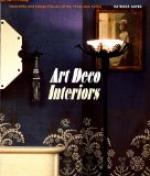If your taste is for modern painted furniture and vivid Bakst colours in cushions and hangings, take your lovely old tapestry away. Speaking of tapestries, do not imagine that they can never be used in small rooms and narrow halls. Plate XIV shows an illustration of a hall in an old-fashioned country house, that was so narrow that it aroused despair. We call attention to the fact that it gains greatly in width from the perspective shown in the tapestry, one of the rare, old, painted kind, which depicts distance, wide vistas and a scene flooded with light. (An architectural picture can often be used with equally good results.) To increase size of this hall, the woodwork, walls and carpets were kept the same shade of pale-grey. The landscape paper in our Colonial houses of the eighteenth and early nineteenth centuries, often large in design, pushed back the walls to the same amazing degree.
FOOTNOTES:
[Footnote 1: Louis XIV, XV, and XVI.]
CHAPTER XIV
PERIODS IN FURNITURE
Periods in furniture are amazingly interesting if one plunges into the story, not with tense nerves, but gaily, for mere amusement, and then floats gently, in a drifting mood. One gathers in this way many sparkling historical anecdotes, and much substantial data really not so cumbersome as some imagine!
To know anything at all about a subject one must begin at the beginning, and to make the long run seems a mere spin in an auto, let us at once remind you that the whole fascinating tale lies between the covers of one delightful book, the “Illustrated History of Furniture,” by Frederick Litchfield, published by Truslove & Hanson, London, and by John Lane, New York. There are other books—many of them—but first exhaust Litchfield and apply what he tells you as you wander through public and private collections of furniture.
If you care for furniture at all, this book, which tells all that is known of its history, will prove highly instructive.




